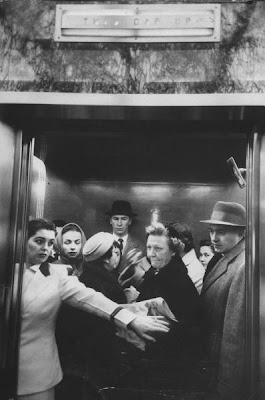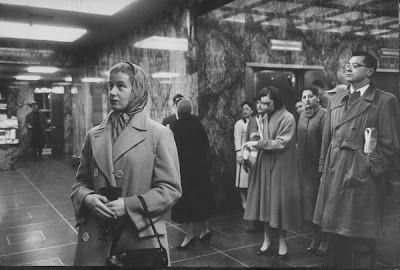Not too long ago, Dear Reader, I published a post about an early-nineteenth century gilt-decorated porcelain saucer that I described as being part of a coffee service. In it, I said that we drink our coffee at Darlington House from what are correctly-termed "cans" and not "cups." A number of my readers wrote to me and asked me to explain what I meant by that. One or two even wondered, incredulously, did I mean we drink our coffee from the metal cans that coffee is sold in?
No, not at all, Dear Reader. We do not drink our coffee from metal cans. The "cans" I am referring to from which we drink our coffee are can-shaped cups, as shown in the following photograph:
Not surprisingly, a complicated and (initially) codified system for drinking coffee emerged as the beverage gained popularity, and then ultimately eclipsed tea as the preferred drink of stimulation. Craftsmen produced pots and cups that were designed expressly for holding coffee, and which are (and remain) readily distinguishable from those designed to hold tea.
The first European-made tea cups were modeled on those produced in and imported from China, as seen in the bowl and saucer shown in the preceding photograph. Such cups are correctly termed tea "bowls," because that is what they are—diminutive bowls. Soon, though, tea bowls began to sprout handles to protect the fingers of the person(s) consuming tea from them from being scalded.
When coffee entered upon the scene in Western Europe and the Americas it was initially drunk from the same bowls and cups as was tea. Soon thereafter, however, a new form of cup was invented for the consumption of coffee.
It was shaped like a small canister, or a miniature version of the mugs used at the time to consume water and beer, and it is the form that is correctly known as a coffee can. Over time such coffee cans lost their associated saucers and have since evolved into what is today known as a coffee mug, the popular vessel used for drinking coffee that can be found in nearly every kitchen cabinet today the world over, including ours at Darlington House.
And with that, Dear Reader, I both conclude my little history lesson of the vessels used in the consumption of coffee and initiate a new series here on Reggie Darling—the Coffee Can of the Week!
I hope you like it . . .
All photographs (except where noted) are of cans, cups, bowls, and mugs in our collection at Darlington House, and were taken by Boy Fenwick
No, not at all, Dear Reader. We do not drink our coffee from metal cans. The "cans" I am referring to from which we drink our coffee are can-shaped cups, as shown in the following photograph:
 |
| The early-nineteenth century gilt-decorated coffee service that started it all . . . |
Can-shaped cups were the preferred form used in Western Europe for drinking coffee in the late-eighteenth and early-nineteenth centuries, at least among elegant people who could afford such things.
 |
| . . . this is a coffee can and not a coffee cup! |
As many of us know (or at least those of us who have spent time looking into such matters know), the consumption of coffee as a beverage originated in Ethiopia in around 800 A.D., spread to Arabia around 1000 A.D., and then into Venice via Turkey in the early 1600s. Once it arrived in Europe, the consumption of coffee quickly spread like wildfire into Holland, France, England, and ultimately America.
 |
| A 1668 illustration showing a contemporary London coffee house Photograph: Lordprice Collection/Alamy Image courtesy of the Telegraph UK |
By the 1700s coffee production had begun in the New World, first by the French on the island of Martinique and then in Brazil. It was in Brazil that favorable growing conditions and industriousness soon began to produce the mammoth harvests that transformed coffee drinking from an indulgence of the privileged elite into the everyday drink of the average man.
 |
| An early-nineteenth century depiction of a South American coffee harvest Image courtesy of Coffee General |
 |
| An English mid-eighteenth century tea bowl and saucer |
The first European-made tea cups were modeled on those produced in and imported from China, as seen in the bowl and saucer shown in the preceding photograph. Such cups are correctly termed tea "bowls," because that is what they are—diminutive bowls. Soon, though, tea bowls began to sprout handles to protect the fingers of the person(s) consuming tea from them from being scalded.
 |
| An early-nineteenth century English tea cup and saucer |
When coffee entered upon the scene in Western Europe and the Americas it was initially drunk from the same bowls and cups as was tea. Soon thereafter, however, a new form of cup was invented for the consumption of coffee.
 |
| The service comes with both tea cups and coffee cans! |
It was shaped like a small canister, or a miniature version of the mugs used at the time to consume water and beer, and it is the form that is correctly known as a coffee can. Over time such coffee cans lost their associated saucers and have since evolved into what is today known as a coffee mug, the popular vessel used for drinking coffee that can be found in nearly every kitchen cabinet today the world over, including ours at Darlington House.
 |
| A trio of English Spode coffee mugs from the 1980s These are our "every day" coffee mugs at Darlington House |
And with that, Dear Reader, I both conclude my little history lesson of the vessels used in the consumption of coffee and initiate a new series here on Reggie Darling—the Coffee Can of the Week!
I hope you like it . . .
All photographs (except where noted) are of cans, cups, bowls, and mugs in our collection at Darlington House, and were taken by Boy Fenwick








































































































